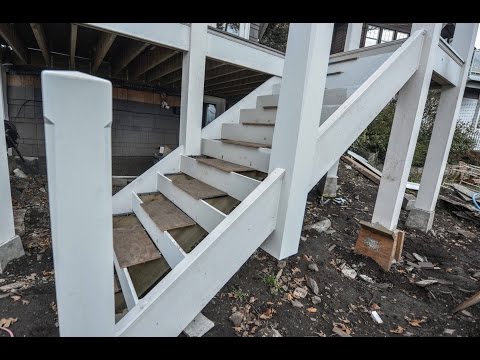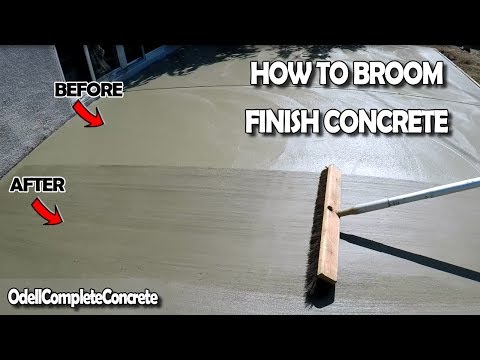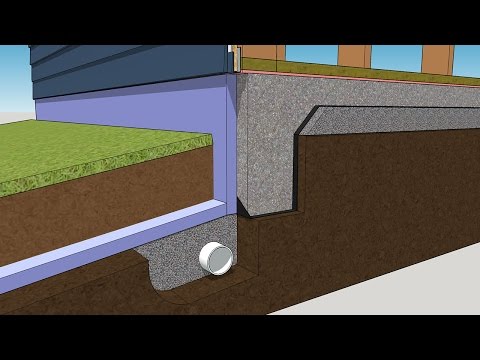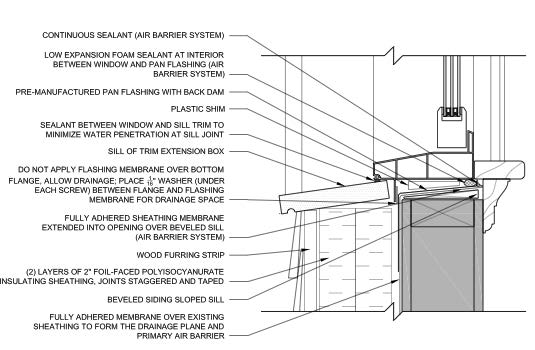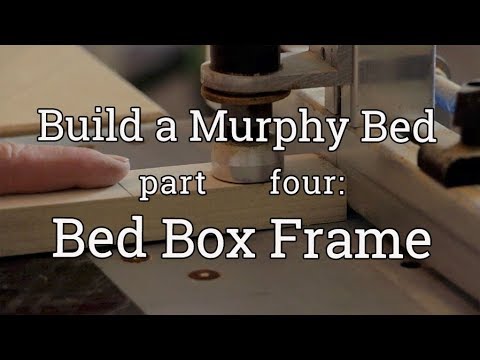The design/build process for a 3-car garage with living space below—wait, what?
Building on the side of a hill, it is cheaper to make living space in a hole than to fill it with 200 cubic yards of compacted fill. It looks like the couches have it.
The design process:
Rather than filling the hole with valuable rock, Peter designed a 900 sq. ft. living area below the parking slab, including a bathroom and small kitchen. He notes, "Parking three full-size cars over living space is a big deal." Even if the cars are little cars, and because cars are heavy and could crush the heck out of someone making popcorn below them.
The engineering solution: steel I-beams and corrugated steel pan decking.
The nested ribs of the decking add integral beams to the concrete, strengthening the slab.
The slab needs to slope 1/8 inch per foot, so a sloped ledge was designed for the steel decking to rest on the exterior foundation walls.
The build process:
The foundation combines stepped footings, tall exterior walls, beam pockets, and a sloped ledge. The foundation walls went up smoothly.
The basement was plumbed for a bathroom and kitchen. Besides supply and waste lines, PEX tubing was added to the slab for hydronic heat.
The beams were placed in beam pockets, the precut steel pans were woven together on top, and an extensive mat of steel rebar was added over the steel decking.
After talking to the plumber, it was decided to add PEX to the garage slab as a future heat distribution system.
Standard wood framing filled the space below the walls for a walkout basement.
"The new building is a nice a complement to the main house and a valuable asset to the new owners."
—Peter Q. Brown is a designer/builder/remodeler in Bozeman, MT. His YouTube channel has design/build videos, rodeo advice, and basketball games.

